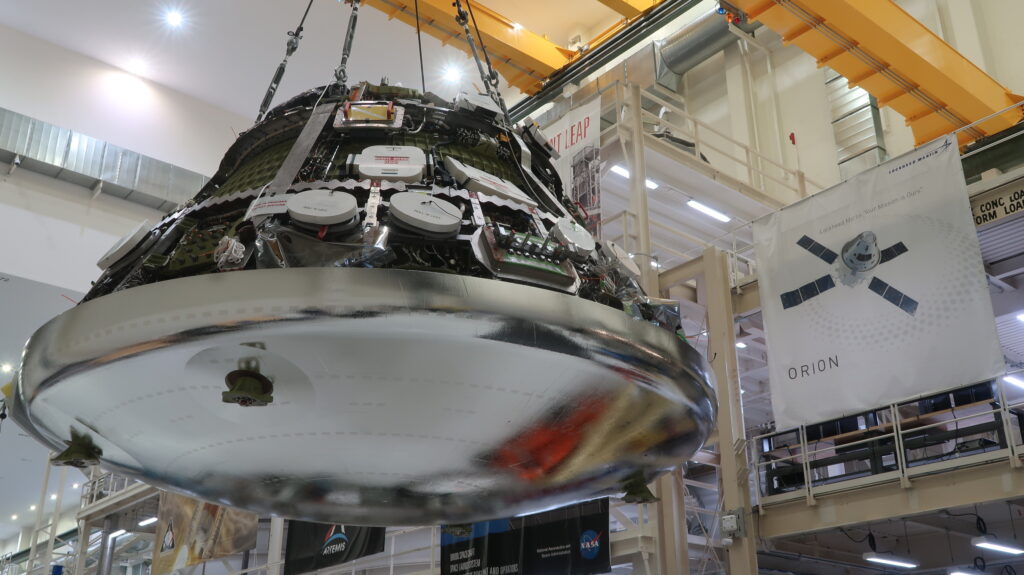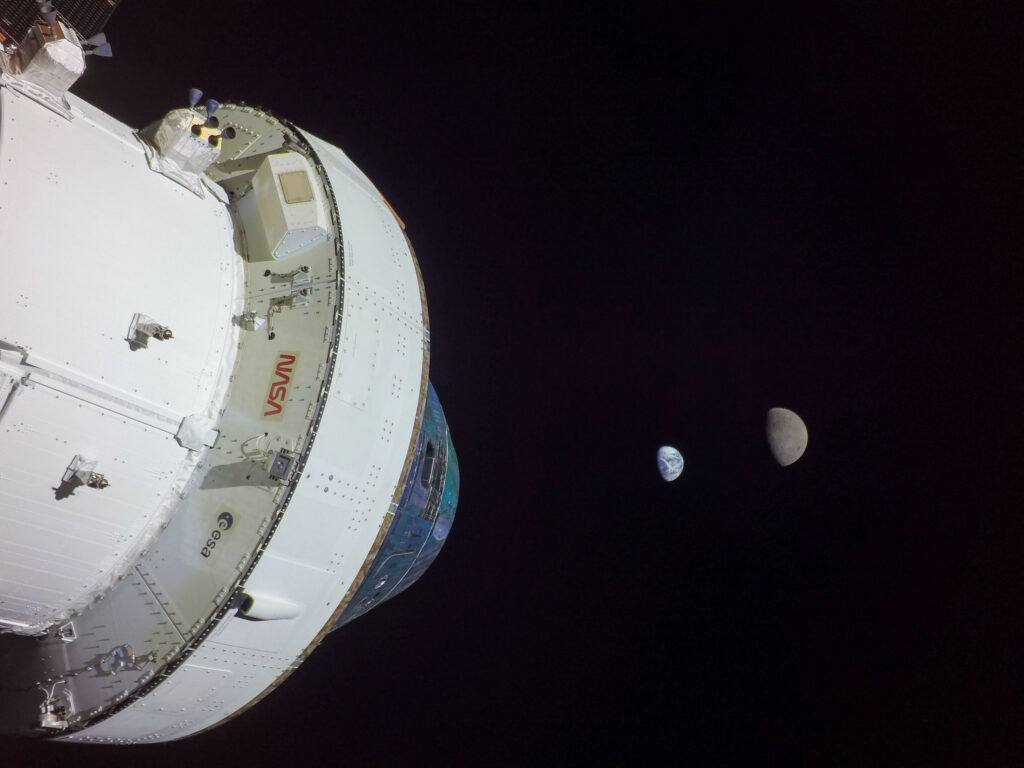Specialists of the Kennedy Space Center have connected the residential and service module of the Orion spacecraft. It will be involved in the Artemis II mission, during which four astronauts will fly around the Moon and then return to Earth.
Technical mechanism of Orion
The Orion spacecraft is an international project. It consists of a residential module built by Lockheed Martin and a service compartment, the creation of which is the responsibility of the European concern Airbus Defense and Space.

The mass of the Orion residential module is 10.4 tons. It is designed for a crew of four astronauts. The module is equipped with thermal protection capable of withstanding entry into the Earth’s atmosphere at the second cosmic velocity.
The Orion service module was created on the basis of the ATV unmanned spacecraft, which once supplied the ISS. It carries all the necessary supply of air and water for the crew, as well as batteries and four photovoltaic panels designed to generate electricity. Its length is 4 meters, its diameter is 4.1 meters (19 meters, taking into account the deployed solar panels), the mass in the refueled state is about 15 tons, of which about 9 tons is fuel for on-board engines.
Artemis II Mission
Last year, NASA conducted the Orion test. During the Artemis I mission, an unmanned version of the spacecraft entered a long retrograde orbit around the Moon, spent a week on it, and then returned to Earth. In total, the entire flight lasted 25 days. NASA recognized the spacecraft’s mission as absolutely successful.

The next step on the way to the Moon will be the Artemis II mission. In its course, four astronauts (three representing NASA and the fourth representing the Canadian Space Agency) will fly around the Moon on a free return trajectory, after which they will return to Earth. This mission will be the first human flight beyond Earth orbit since 1972.
At the moment, the launch of the Artemis II mission is scheduled for November 2024. NASA is actively preparing for it. In September, engineers installed all four RS-25 engines on the central block of the superheavy SLS rocket. Now NASA has completed the Orion assembly. In the near future, the spacecraft will undergo a series of tests that will certify its readiness for space flight.
Follow us on Twitter to get the most interesting space news in time
https://twitter.com/ust_magazine
